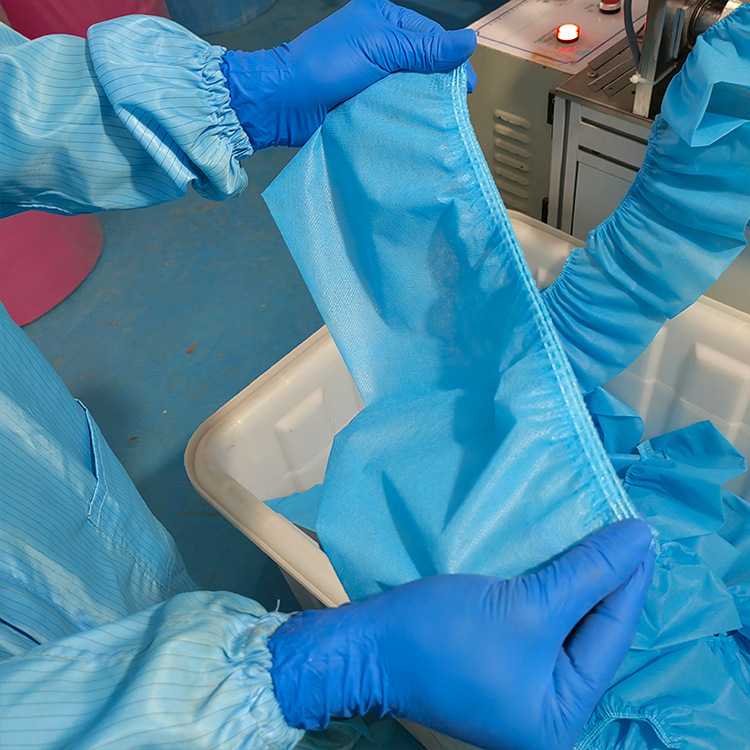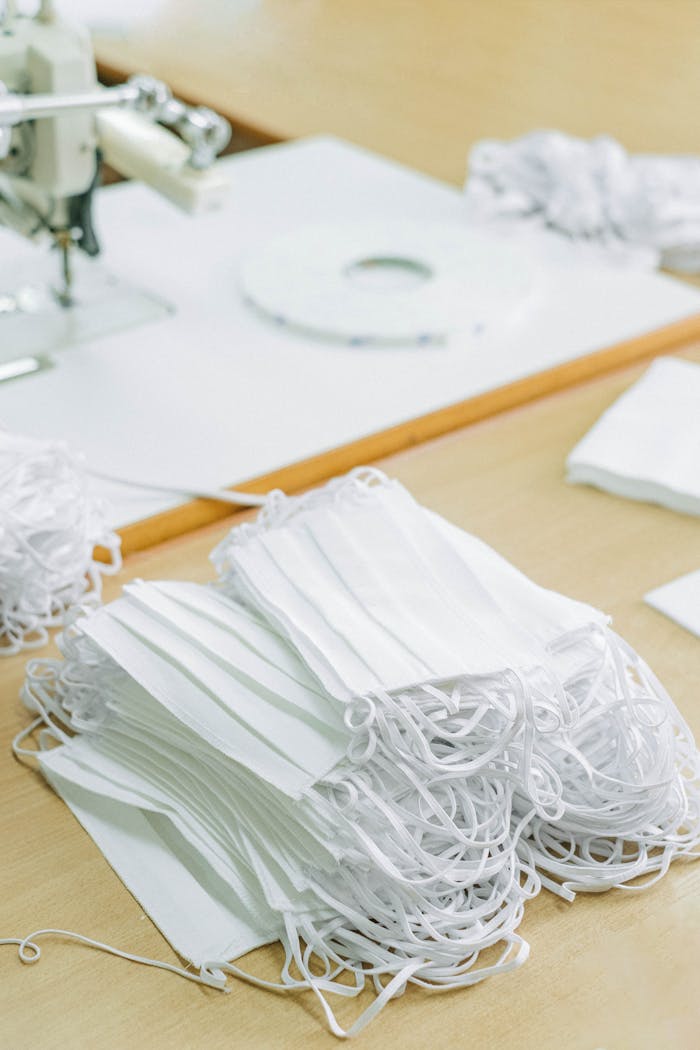
In the healthcare industry, maintaining a sterile and safe environment is paramount. One of the critical components in achieving this is the use of appropriate protective gear, including shoe covers. While both medical and ordinary disposable shoe covers serve the purpose of protecting footwear and maintaining cleanliness, there are significant differences between the two that healthcare agents and distributors must understand. These differences lie in their material composition, level of protection, design features, and intended use cases. This article will delve into these distinctions to help you make informed decisions when selecting and promoting the right products for your clients.
1. Material Composition: The Foundation of Protection
The most significant difference between medical and ordinary disposable shoe covers lies in their material composition. This distinction directly impacts their durability, protective capabilities, and suitability for specific environments.
Medical Shoe Covers: Advanced Composite Materials
Medical shoe covers are designed to provide superior protection in high-risk environments, such as hospitals, clinics, and laboratories. They are typically made from a combination of high-quality materials, including:
- Outer Layer: A durable polyethylene (PE) film that offers resistance to liquids, chemicals, and contaminants.
- Inner Layer: A soft polypropylene non-woven fabric that ensures comfort while maintaining breathability.
This composite structure ensures that medical shoe covers are impermeable, providing a robust barrier against blood, bodily fluids, and other potentially infectious materials. The use of advanced materials also enhances their tear resistance, making them suitable for demanding healthcare settings.
Ordinary Shoe Covers: Simpler Materials
In contrast, ordinary disposable shoe covers are often made from single-layer materials such as:
- Polyethylene (PE): A lightweight and cost-effective option, but less durable and protective.
- Chlorinated Polyethylene (CPE): Slightly more resistant to liquids than standard PE but still not as robust as medical-grade materials.
- Non-Woven Fabric: Offers better breathability but lacks the impermeability required for medical environments.
While these materials are sufficient for general use in low-risk settings (e.g., home cleaning, light industrial work), they do not provide the same level of protection as medical shoe covers.
2. Level of Protection: Tailored for Specific Needs
The level of protection offered by shoe covers is a critical factor in determining their suitability for healthcare environments. Medical shoe covers are engineered to meet stringent safety standards, whereas ordinary shoe covers are designed for basic cleanliness.
Medical Shoe Covers: High-Level Protection
Medical shoe covers are specifically designed to address the unique challenges of healthcare settings. Key features include:
- Impermeability: The composite materials used in medical shoe covers create a barrier that prevents liquids, pathogens, and contaminants from penetrating the fabric.
- Non-Slip Treads: Many medical shoe covers feature textured soles to reduce the risk of slips and falls, even in wet or slippery conditions.
- Extended Coverage: Some medical shoe covers are available in knee-high designs, providing additional protection in situations where there is a risk of high-volume liquid exposure (e.g., during surgeries or emergency procedures).
These features make medical shoe covers indispensable in environments where infection control and safety are top priorities.
Ordinary Shoe Covers: Basic Protection
Ordinary shoe covers, on the other hand, are designed for general-purpose use. While they can protect shoes from dust, dirt, and light moisture, they are not suitable for environments where exposure to hazardous materials is a concern. Their simpler design and materials make them more appropriate for non-medical applications, such as:
- Home use (e.g., protecting floors during cleaning or painting).
- Light industrial work (e.g., construction sites, warehouses).
- Commercial settings (e.g., real estate showings, maintenance work).
3. Design Features: Functionality and Comfort
The design of shoe covers plays a crucial role in their effectiveness and user experience. Medical shoe covers are engineered with features that enhance both functionality and comfort, while ordinary shoe covers prioritize simplicity and ease of use.
Medical Shoe Covers: Enhanced Functionality
Medical shoe covers are designed with the needs of healthcare professionals in mind. Key design features include:
- Elastic Bands: The tops of medical shoe covers are equipped with elastic bands to ensure a snug fit, preventing the covers from slipping off during use.
- Breathable Materials: The inner layer of polypropylene non-woven fabric allows for airflow, reducing discomfort during extended wear.
- Color Coding: Medical shoe covers are often available in white or blue, allowing for easy identification and differentiation in healthcare settings.
These features not only improve protection but also contribute to a more comfortable and efficient user experience.
Ordinary Shoe Covers: Simplicity and Convenience
Ordinary shoe covers are designed for quick and easy use in less demanding environments. Their design features typically include:
- Elastic Openings: Like medical shoe covers, ordinary versions often have elastic bands to secure them in place.
- Lightweight Construction: The use of simpler materials makes ordinary shoe covers lightweight and easy to put on and take off.
- Basic Colors: Ordinary shoe covers are usually available in standard colors like white or blue, but they may lack the color-coding options found in medical versions.
4. Intended Use Cases: Matching Products to Needs
Understanding the intended use cases for medical and ordinary shoe covers is essential for recommending the right product to your clients.
Medical Shoe Covers: Specialized Applications
Medical shoe covers are specifically designed for use in healthcare settings, including:
- Hospitals and clinics.
- Laboratories and research facilities.
- Emergency response situations.
- Cleanrooms and sterile environments.
In these settings, the advanced protection offered by medical shoe covers is necessary to prevent cross-contamination and ensure compliance with health and safety regulations.
Ordinary Shoe Covers: General Applications
Ordinary shoe covers are better suited for non-medical environments, such as:
- Residential cleaning and maintenance.
- Light industrial work.
- Commercial and retail settings.
- Events and exhibitions.
While they provide basic protection, they are not designed to meet the rigorous demands of healthcare environments.
5. Cost Considerations: Balancing Quality and Budget
As a healthcare agent or distributor, it’s important to consider the cost implications of recommending medical versus ordinary shoe covers. While medical shoe covers are typically more expensive due to their advanced materials and features, their superior protection and durability can lead to cost savings in the long run by reducing the risk of contamination and the need for frequent replacements. Ordinary shoe covers, on the other hand, are more affordable and suitable for low-risk applications where high-level protection is not required.
Conclusion: Choosing the Right Product for Your Clients
In summary, the key differences between medical and ordinary disposable shoe covers lie in their material composition, level of protection, design features, and intended use cases. Medical shoe covers are engineered to provide superior protection in high-risk healthcare environments, while ordinary shoe covers are designed for general-purpose use in low-risk settings.
As a healthcare agent or distributor, understanding these differences will enable you to recommend the most appropriate products for your clients’ needs. By offering both medical and ordinary shoe covers, you can cater to a wide range of applications and ensure that your clients have access to the right level of protection for their specific requirements.
Ultimately, investing in high-quality medical shoe covers for healthcare settings is not just a matter of compliance—it’s a commitment to safety, hygiene, and the well-being of both healthcare professionals and patients.
